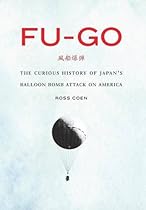

In 1842 John C. Frémont led a party of twenty-five men on a five-month journey from Saint Louis to the Wind River Range in the Rocky Mountains; his goal: to chart the best route to Oregon. In 1843 Frémont was commissioned for another expedition; to explore the Great Salt Lake; Washington; eastern California; Carson Pass; and the San Joaquin Valley; places that did not yet belong to the United States.His journals from these expeditions; edited in collaboration with his wife; Jessie Benton Frémont; and published by Congress; thrilled the nation and firmly established Frémont’s persona as the Great Pathfinder. Part descriptive survey; part rousing adventure story; Frémont’s account was far more than a traveler’s guide. His tales of courage and wit; descriptions of beautiful landscapes; and observations about Native Americans strengthened Americans’ sense of a national identity and belief in Manifest Destiny. Still a fascinating page-turner today; Frémont’s report documents the opening of the West even as it offers a firsthand look at the making of the American myth.Anne F. Hyde provides an introduction to this signature American story that contextualizes the report; outlines Frémont’s rise and fall; and shows how; for better or worse; this explorer exemplifies the nineteenth-century American spirit.
#730218 in Books Coen Ross 2014-11-01Original language:EnglishPDF # 1 9.25 x 6.50 x 1.25l; #File Name: 0803249667296 pagesFu Go The Curious History of Japan s Balloon Bomb Attack on America
Review
1 of 1 people found the following review helpful. easy to ready book that is well researchedBy NathanThis is a short; easy to ready book that is well researched. I rated it only 3 stars because it could have been much more concise. It feels like a research paper that was stretched into a book. There is little talk of the sheer desperation that Japan faced which brought about the balloon bombs. I rarely say this; but listening to the several different podcasts which covered this story will summarize Coen's work sufficiently to make reading the book pointless. In the book it's mentioned that these were the first ICBMs; but not much more is mentioned. He talks about how the US and Canada were extremely worried about bacteriological warfare; but gives no explanation as to why the Japanese did not use bio weapons against the US homeland.In short; the book is well worth a read; but I'd borrow it from your local library.0 of 0 people found the following review helpful. Fu-Go; revisitedBy T. StibalNow; following on the long-available book by Robert Mikesh on the Fu-Go campaign; we have what I would call a "social history" of the Japanese effort to rain fire and destruction on the Western United States. While the Mikesh book was great as far as it went (and gave the reader a blueprint for building their own version of the Fu-Go should they have so desired; this book covers the human side of the weapon; particularly from the US viewpoint.The Mikesh book traces the weapon from its early roots; but passes over the stories of the people who created the weapon. The Mikesh book takes a calculated; clinical look at how the weapon functioned; but leaves out the stories of the people who found the bombs (and the personal story of the one group that was actually the victim of a Fu-Go.This book has a substantial number of photos of the bombs that did not appear in the Mikesh book; as well as a condensed version of the technical drawings and tables in the first volume. Also; this book comes in a hardbound version; something that the Mikesh book apparently never did.In summary; for a full; exhaustively complete version of the story of the first ballistic missile program based upon 1800s technology; you need to purchase both books. But; for a pretty good examination of the program from the American perspective; you can get by with this book alone.2 of 3 people found the following review helpful. FIVE STARS ALL AROUND; Great Informative books with a lot of new informationBy Military RadiomanI have to rate Coen's book 5 stars. It was a very well written book on the WWII Japanese balloon bombs. I'm an amateur WWII home front historian and have studied the subject since reading Robert Mikesh's Smithsonian Institution book Japan's WWII Balloon Bomb Attacks on North America in the early 1980s. The next book on the subject was Bert Weber's Silent Siege III. Coen goes into much more detail on the balloon landings and the military follow up. Coen's book is not a technical book with not as much tech information on the balloons as in the other two books but still a great book. One thing I really would like to have seen is a list of the balloons found since the end of WWII. Coen lists only those found during the war. As of my writing this in Feb 2015; the last one found was in British Columbia; Canada in October 2014.